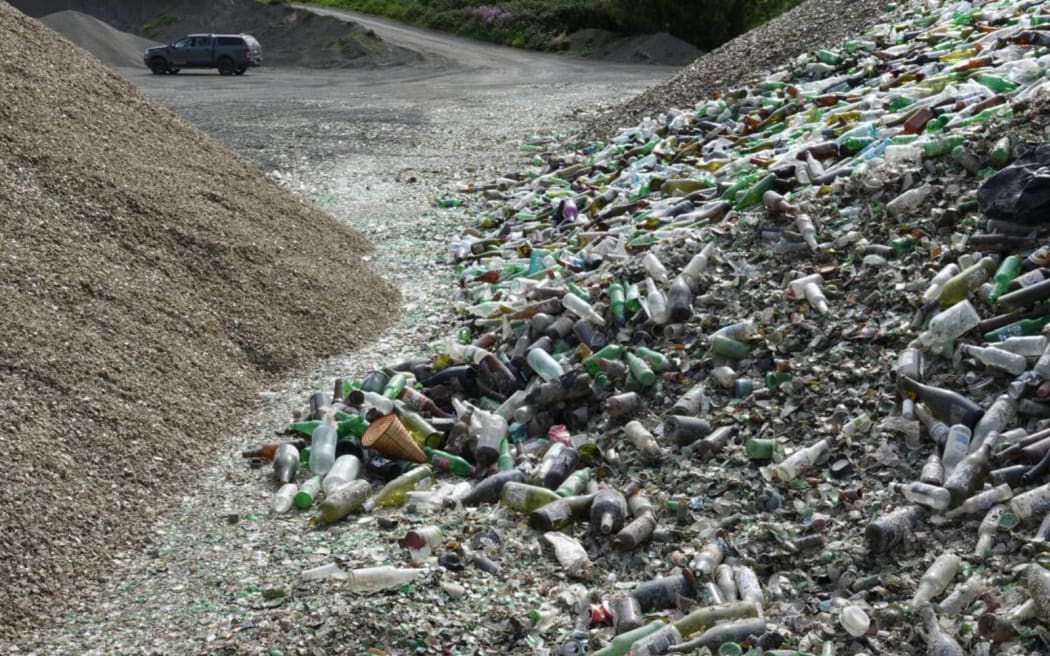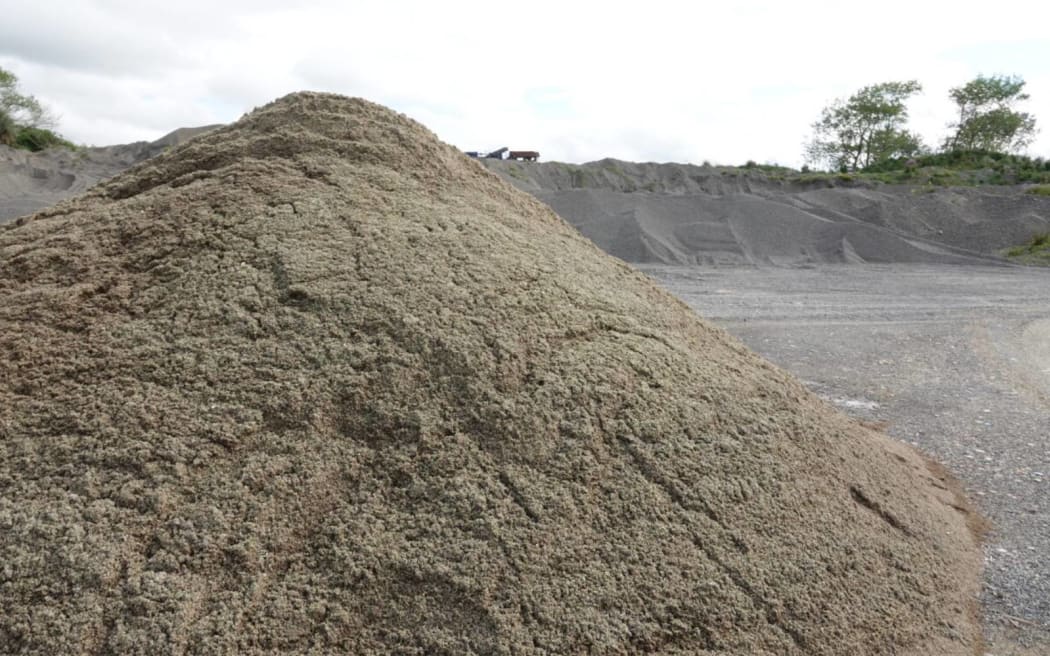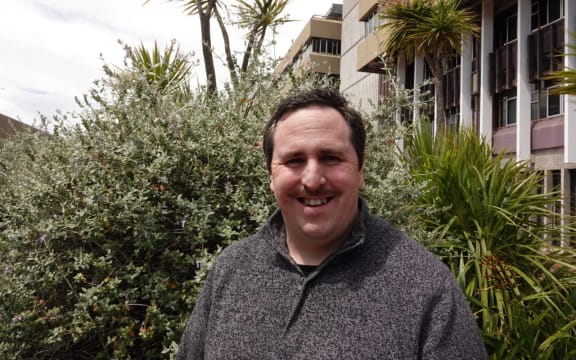
Piles of glass and crushed glass at the quarry near Palmerston North. Photo: Jimmy Ellingham / RNZ
A large pile of smashed glass that was bound for the tip is being given a new lease of life for use in roads and pathways.
Manawatū company Higgins Concrete and related entity Hirock Quarry are crushing it into little pieces and hope to soon offer the product, with its environmental benefits, to clients.
Right now, tests are taking place in a corner of the Hirock Te Matai Quarry near Palmerston North.
"We've got our stockpile of glass from the city council. Trucks bring it in. We push it up into a heap," quarry manager Paul Tocker said.
From there, the crushing machine gets to work.
"We've got some products that have come off it - a 20 millimetre, which is more of a trial, and a sub-5 sand, which is crushed glass. That will be the primary product that we will be generating out of this."
Most of the glass the Palmerston North City Council collects from the kerbside or its recycling depots can be recycled. But, some can't be, if the colours were mixed or it was damaged, so that was where Higgins and Hirock were stepping in.
Since earlier this year they've taken away about 5000 cubic metres of the unrecyclable glass from the council glass mound - enough to fill two Olympic-size swimming pools.
"There's a little bit of waste material in there - paper, bottle caps. That's all good to be taken out by the air knife and magnets," Tocker said.
"That's part of what makes the technology a bit better now. We can use compressed air on the crusher to blow all the labels out, the non-magnetics.
"The magnet belt - not a new invention - that gets a lot of the bottle caps and waste debris."
From there the glass was crushed to whatever size was required. The quarry crusher could make finely ground glass, which looked like sand, and could be used like that.
"You can pick it up and roll it in your hand as hard as you want. You're not going to cut yourself on it because it's been turned into a very small cube shape. That's what makes it a nice product to use."
Quarry workers were finding all sorts of rubbish within the glass from the council.
"I'm not sure who's putting the nails in there, but it's not just one person. I think we're up to about three tonnes of nails so far, from maybe 200 tonnes of glass.
"There's all sorts in there. There's a bit of wood, for some reason, [and] a car battery. All that stuff, we sort that before it goes into the plant.

Finely crushed glass looks and feels like sand. Photo: Jimmy Ellingham / RNZ
Recently a petanque ball went through the crushing machine, causing damage.
"I don't know why it was in there, but it just was."
Tocker said the idea to use crushed glass in road surfaces had been around for a while, but until now the technology available did not make it viable.
Waka Kotahi had rules about how much glass could be used in pavements. Its use would give customers options, and it had environmental plusses.
"For us, it stretches our resource out. It might be 3 percent, but 3 percent over, say, 20 years can be quite a bit. That's sand that we don't have to use from our existing resource," Tocker said.
"We've got to make it before we can sell it, so it's better to have it here and do testing, whether it's say concrete sand, or roading aggregate, or decorative pebbles, even.
"We need the test results. People doing major works aren't going to just trial something on a whim. They want to know that it works before they take it."
There's data available from overseas and, as Hirock transport manager Daniel Higgins said, a local example too.
"Twenty years ago we did a trial with a glass mix and asphalt. We laid that in a driveway in Ashhurst and to this day that driveway is holding up with trucks and trailers driving over it. It's a very busy driveway into a farm."

Bryce Hosking, of the Palmerston North City Council, says the council had hoped to find a company that could use the glass. Photo: Jimmy Ellingham / RNZ
Palmerston North City Council group manager of property and resource recovery Bryce Hosking said the council had spoken to several firms in the hope of finding a use for the unrecyclable glass.
"We collect glass as part of our kerbside collection. While the majority of it we're able to send up to Auckland to get recycled and reused, and turned back into glass, alongside that we do also get a whole bunch of smashed glass.
"It's all mixed together, and stuff that's not suitable to go up north."
Since the Covid-19 lockdowns in 2020, the council decided to stockpile it while it looked for uses for it to avoid sending it to the dump.
"Essentially, the glass recycler up north turns the clear bottles into clear bottles again, brown into brown etc. If it's all smashed together they can't do that and that's where it gets a bit difficult to recycle."
Higgins and Hirock began collecting their pile earlier this year.
The council paid the companies a sum Hosking said was commercially sensitive, but it was less than the cost of sending the glass to the landfill.

